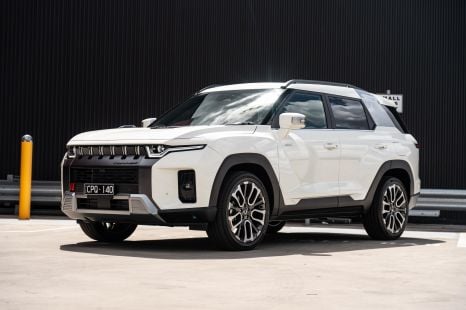

Max Davies
5 Days Ago
What better way to test the CX-9's credentials than with a five-hour road trip involving homewares, my mother, my girlfriend, and some very mild off-roading?

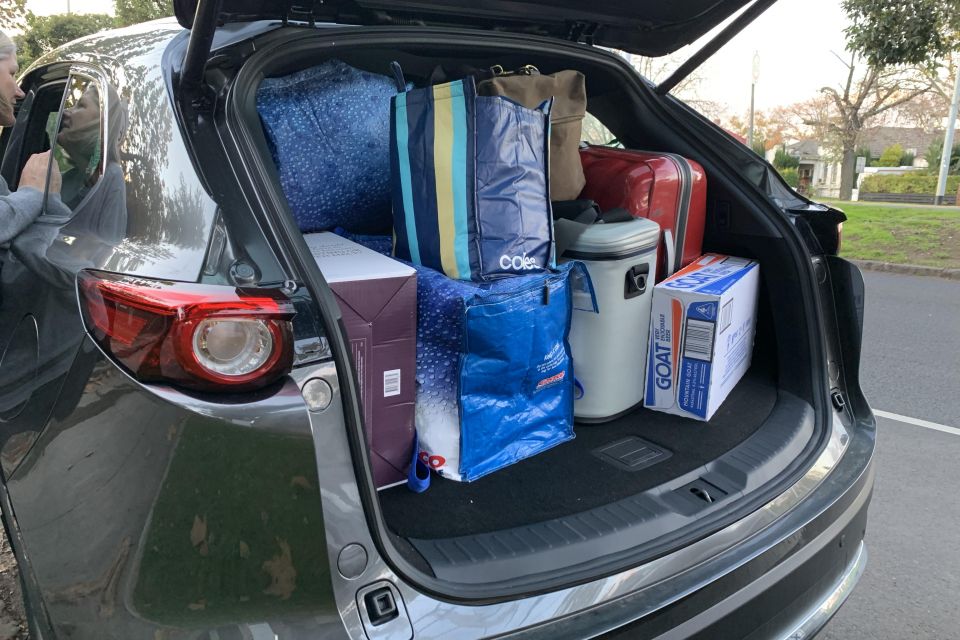

Contributor
New from
$45,920
excl. on-roads

Contributor
New from
$45,920
excl. on-roads


Contributor
New from
$45,920
excl. on-roads

Contributor
New from
$45,920
excl. on-roads
Quickly see how this car stacks up against its competition. Select any benchmark to see more details.
CarExpert does the hard work to get you the best price. No negotiating, no hidden costs, just expert help and real savings on your next new car.
We had the Mazda CX-9 GT during the first Victorian lockdown. We managed to take it on a road trip between Coronavirus outbreaks, and have chronicled our experience here.
There’s nothing like a road trip to put a large family crossover like the Mazda CX-9 through its paces. Lots of luggage and people piled in together for hours on end can be a recipe for disaster in the wrong car.
What better way to test the CX-9’s credentials than with a five-hour road trip involving homewares, my mother, my girlfriend, and some very mild off-roading?
Here’s a breakdown of the journey.

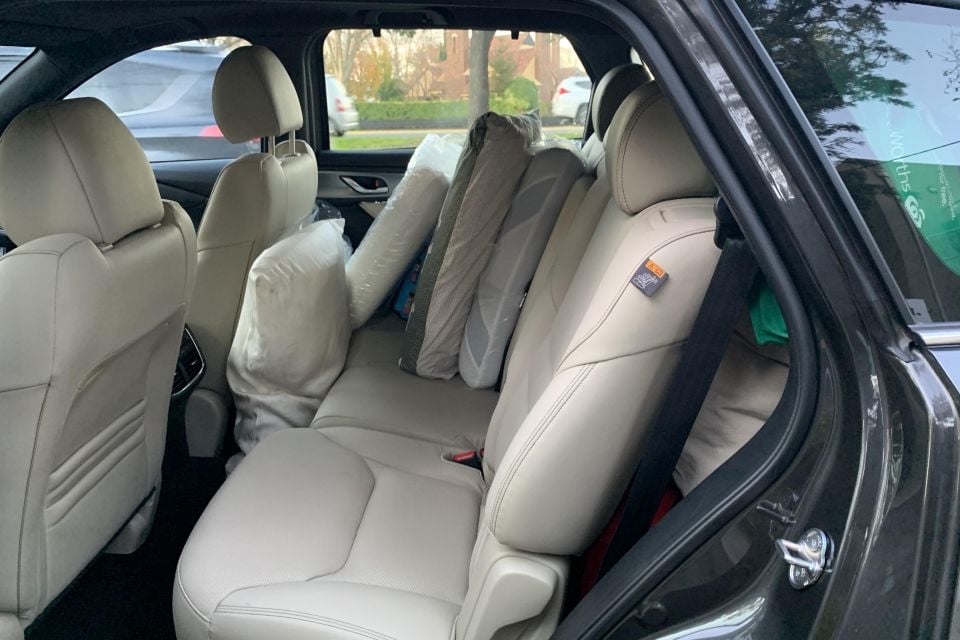
Start: Trip kilometre zeroed and boot fully loaded, the Mazda CX-9 rolled out of Elwood. When we say boot fully loaded, we really mean it. If you ever need to see how much a car will hold, throw it over to your mother.
The whole point of this trip is to help some family friends set up an apartment at Falls Creek. Along with three people’s clothes and food for a weekend away, the big Mazda was packed with kitchen equipment, bedding, beer, and furniture.
Although it’s not quite as sprightly as usual, the 2.5-litre engine in the CX-9 is up to the task of hauling it all around.
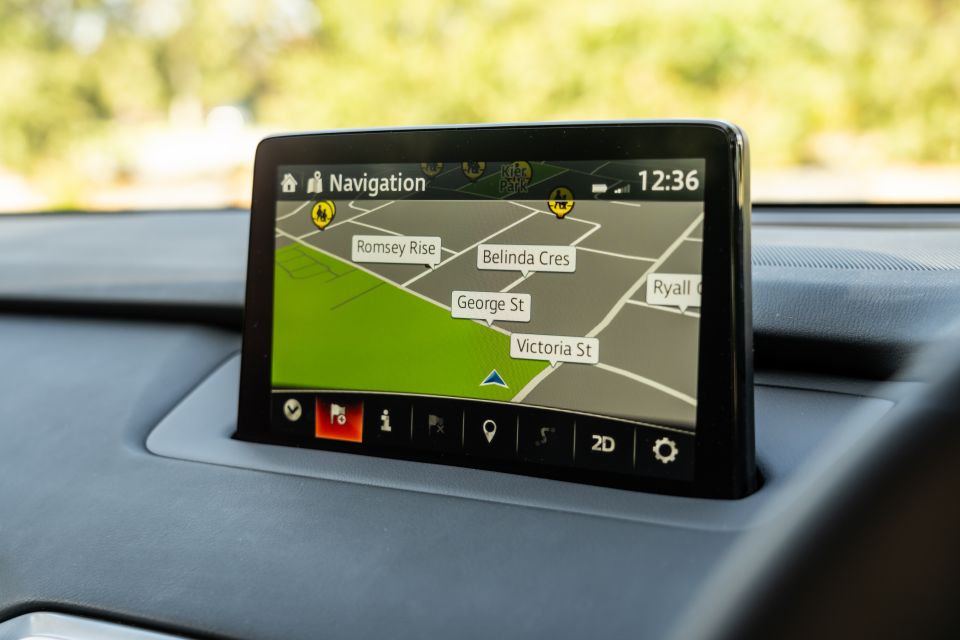
8.6km: A quick stop to collect my girlfriend from work in the CBD. The CX-9 might be massive, but it doesn’t feel out of place in town in the same way as, say, a LandCruiser thanks to its light steering and easy-to-spot corners.
As for the reversing camera? Well it has one, but it’s far foggier than any camera really has the right to be in 2020.
23.9km: Off the Tullamarine Freeway and onto the Western Ring Road. Mum’s now nestled in the back seat, bum warmer cranking. At six-two she isn’t short, but legroom is excellent and there’s plenty of headroom to boot. The reclining second-row backrest also helps.
46.4km: Goodbye Ring Road, hello Hume. Older Mazdas were widely criticised for being a bit noisy on the open road, but the CX-9 is impressively hushed. There’s no need to speak up if you’re trying to converse with back seat passengers, which can only be a good thing.

Also coming in handy is the CX-9’s myriad storage options. With drink bottles in the front cupholders, a bag of lollies stashed in the space under the centre console, and wallets, phones, and keys hiding in the front armrest storage bin, there’s no shortage of options.
83.8km: The ambient lighting in the CX-9 becomes too much around Clonbinane. The culprit is an LED on the overhead console which, even with the lighting set to its lowest brightness, constantly catches your attention.
It can be turned off, but there’s a bit too much menu diving required. Speaking of which, having a shortcut button to turn off the infotainment display would be welcome.
176km: McDonalds stop. In-cabin storage comes in handy once again, as drink bottles are relegated to door pockets in favour of tooth-rotting, artery-clogging soft drinks.
Also handy? Having a passenger who’s willing to pass you chips while you drive.
185km: No relevance to the Mazda, but there’s a strong smell of Big Mac in the air.
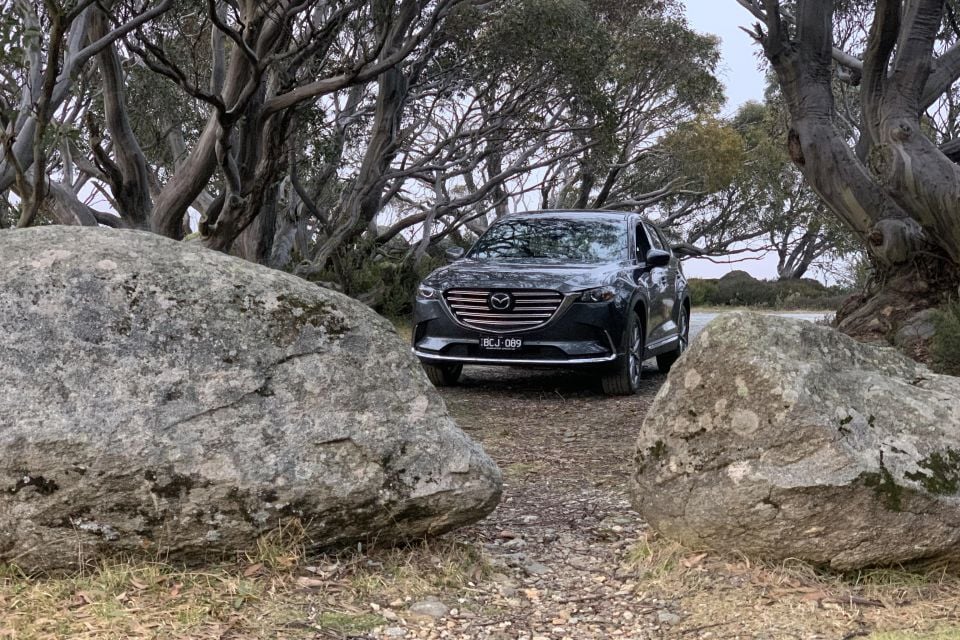
227km: It’s responsive to other cars, but the CX-9’s adaptive cruise control can be a bit loose on hills. It accelerates too hard on the way up, so when you crest a hill you’re already a few km over the limit – something that’s tougher to arrest on the way down, naturally.
Not a problem in some parts of the world, but on the Hume freeway with its point-to-point cameras a creeping cruise control system is enough to get you slapped with a nasty fine.
264km: We’re off the Hume and onto some proper country highways now, as Oxley, Milawa, and Myrtleford whiz past.
Complaints from the back seat are 100 per cent down to my music choices, there’s no problems with the CX-9. Even on secondary country roads that aren’t surfaced like major arterials it remains quiet in the cabin, and the ride is impressively composed over lumpen tarmac.
There’s something to be said for fitting tyres with a proper sidewall to your practical SUV, even if they aren’t quite as stylish.
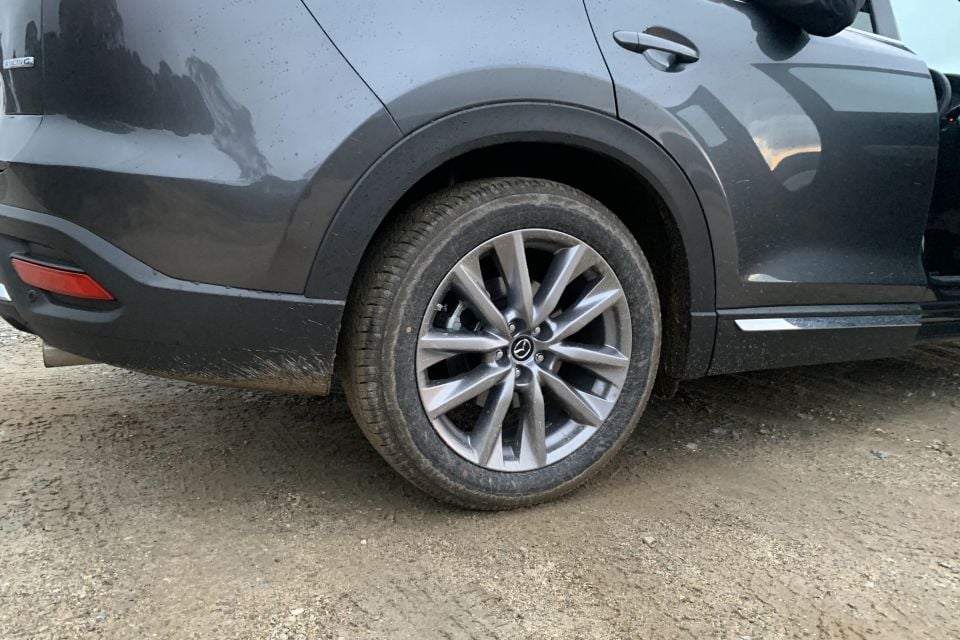
324km: The road gets twisty in Happy Valley. It’s here to Mazda feels very heavy. It tips the scales at 2006kg, but with all of our kit on board (and three people) it’s probably closer to 2400kg.
The steering is well judged, linear and heavy enough to inspire confidence. As long as you’re aware of the CX-9’s size on the way into a corner, you can nurse it through carrying a surprising amount of speed.
The 2.5-litre petrol engine does an impressive job of hauling our considerable mass up hills, and Sport Mode is smart enough to hold a lower gear when you mat the throttle to keep the car in its torque sweet spot. But it’s thirsty.
At the start of the Happy Valley road we’re averaging around 8.8L/100km. By the end that number has ballooned to 9.5L/100km.
348km: The fog sets in around Tawonga, revealing another CX-9 flaw. The tiny LED fog lights hiding in the outer corners of the front bumper don’t really do much.
Their light is too white and their beam set too high, limiting their effectiveness. The headlights are excellent though. High-beam casts a bright, broad tunnel of light through the country darkness when there’s no pesky fog in the way.
365km: Mount Beauty signals the start of the climb to Falls Creek. It’s also the last fuel stop. With just under half a tank remaining, there’s no need to stop.
380km: Maybe filling up was a good idea. The combination of a full load, a steep climb, and my desire to get to Falls Creek for a quick beer before bed makes the Mazda drink like a sailor. By the time we reach the top consumption has stretched out to 10.3L/100km.
The brakes are up to the task of stopping such a hefty beast though, and flicking the transmission into manual allows for more control over the engine braking. It shifts fast enough for a torque converter, too.
389km: Deer! A scare from a massive deer standing in the middle of a blind corner combined with a growing chorus of complaints from the passenger and rear seats means the pace has slowed significantly. The Mazda is still thirsty.

394km: Beer time. The CX-9 ticks itself cool.
400km: We pile back into the CX-9 the next day to explore the soon-to-be-closed roads leading from Falls Creek out to Mount McKay. Performance is notably better without a boot full of homewares, even though we’ve gained a passenger.
404km: It has all-wheel drive, but the CX-9 is not an off-roader. Fire trails are about the limit of its capabilities, as proven by the way is slips and slides through a muddy, slushy patch of the road we’re on. The weak fog lights are once again annoying.
410km: Weekend over, it’s time to hit the road. With just two passengers on board and overnight bags in the boot, the big Mazda would breathe a sigh of relief if it could.
440km: Going down the mountain is much easier on the Mazda than climbing it. It’s still a big car, but freed of all the extra weight it feels slightly sprightlier, and keener to change direction.
Fuel consumption is also far better when you can coast downhill. We stop for fuel in Mt Beauty. Even though the CX-9 needs only 91RON, we treat it with premium unleaded. It’s worked hard, after all.
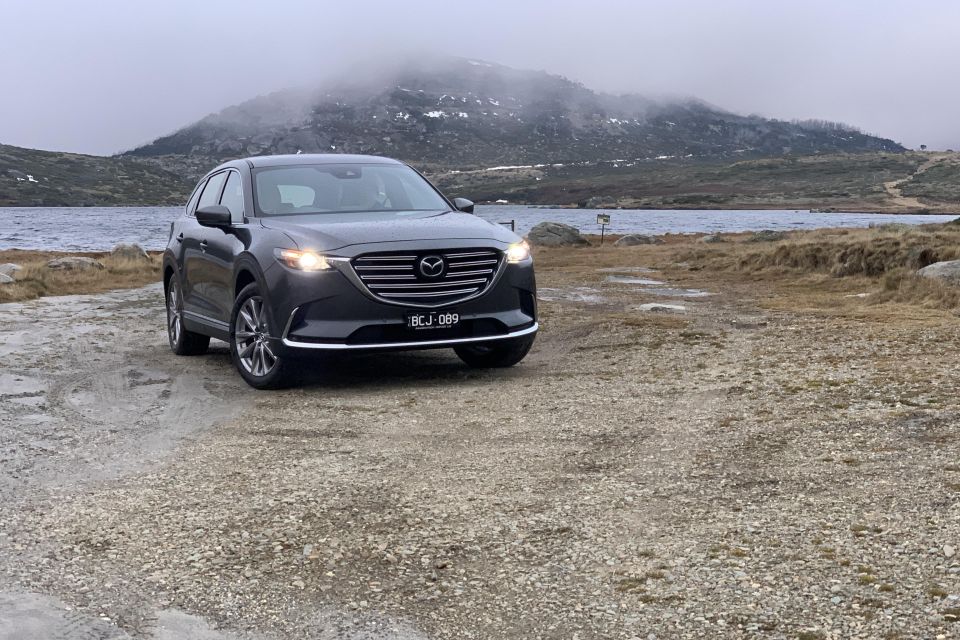
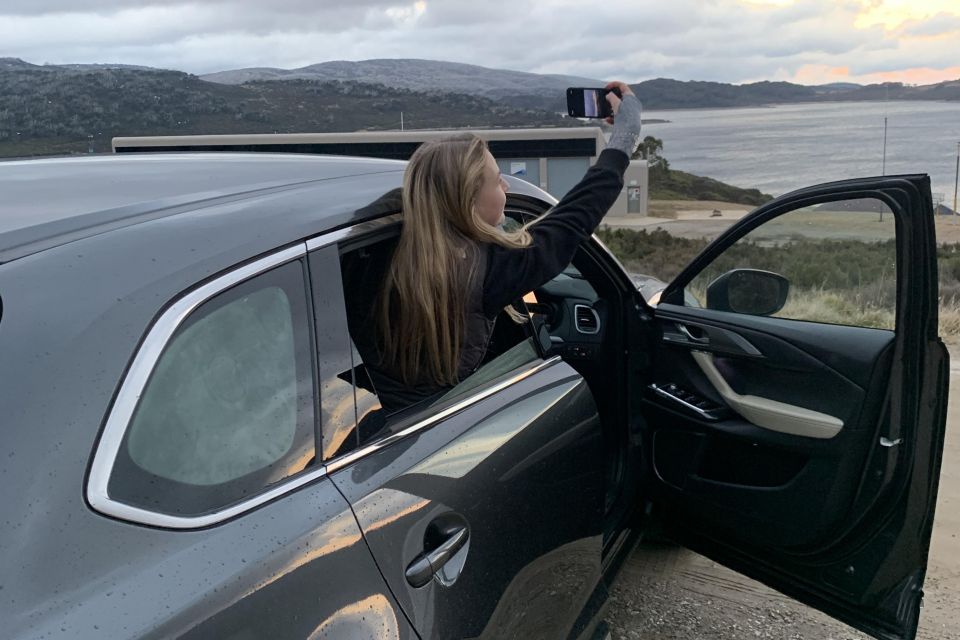
500km: Driver change. I’m into the passenger seat, as my girlfriend takes the wheel. She’s immediately impressed by the punchy engine – but given she drives a first-generation Mazda 3, that should come as no surprise.
612km: Maisie also comments on the creeping cruise control. It’s really annoying, given adaptive cruise is designed as a convenience feature.
The fuel economy is improving, but I can’t help wonder why you wouldn’t go for a diesel if you spend a lot of time on the highway. The Hyundai Santa Fe can be had with an excellent 2.2-litre turbo-diesel, while Mazda itself offers the CX-8. Nice as the smooth, torquey 2.5 in the CX-9 can be, it’s not the most economical choice on the open road.
721km: One final driver swap as we approach the city again. The CX-9 has acquitted itself well.
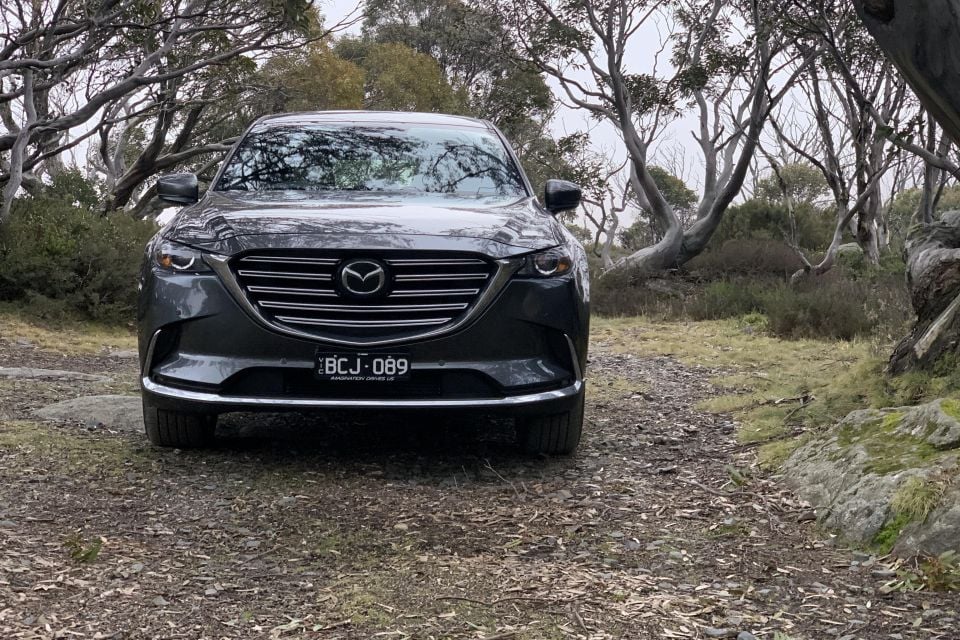
797.6km: Home. The CX-9 has averaged 9.3L/100km.
There’s no questioning its credentials as a family hauler. It’s comfortable and spacious, with levels of refinement previously unheard of in a Mazda.
The petrol engine is a winner in town, but it’s the car’s only weak point on the highway. With that said, it’s hard to imagine a Hyundai Santa Fe V6, Nissan Pathfinder, or Toyota Kluger would have done any better in the efficiency stakes.
CarExpert does the hard work to get you the best price. No negotiating, no hidden costs, just expert help and real savings on your next new car.
Scott Collie is an automotive journalist based in Melbourne, Australia. Scott studied journalism at RMIT University and, after a lifelong obsession with everything automotive, started covering the car industry shortly afterwards. He has a passion for travel, and is an avid Melbourne Demons supporter.


Max Davies
5 Days Ago


Matt Campbell
4 Days Ago
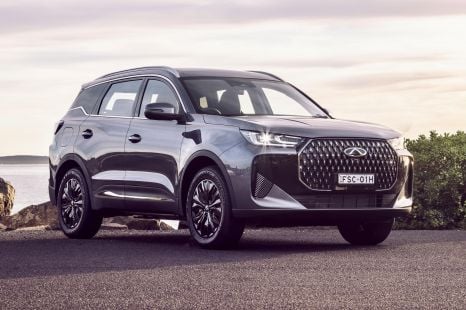

Max Davies
2 Days Ago


Josh Nevett
1 Day Ago
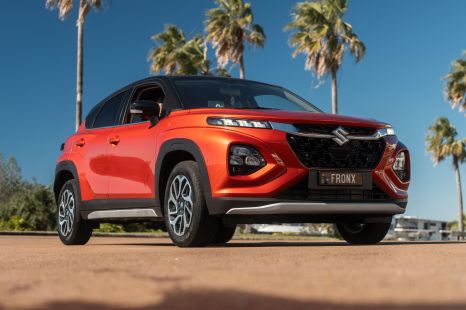

William Stopford
1 Day Ago
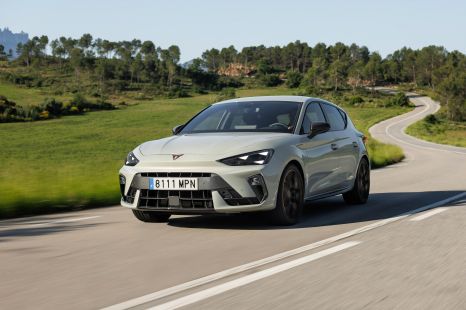

James Wong
7 Hours Ago